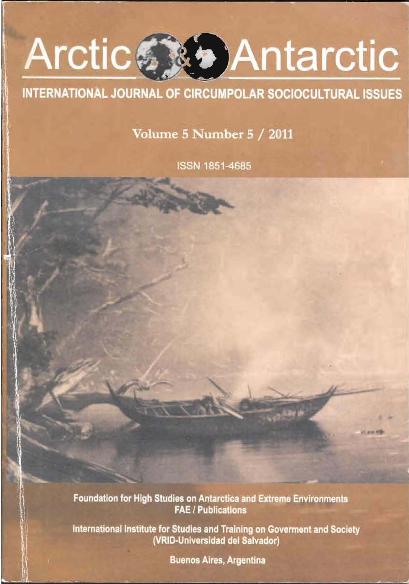Mostrar el registro sencillo del ítem
dc.contributor.author
Mansur, Maria Estela

dc.contributor.author
Hardy, Karen
dc.contributor.author
Piqué, Raquel
dc.date.available
2017-02-20T21:24:39Z
dc.date.issued
2011-06
dc.identifier.citation
Mansur, Maria Estela; Hardy, Karen; Piqué, Raquel; Landscape and human settlement dynamics in insular environments : an archeological approach; Foundation for High Studies on Antarctica and Extreme Environments; Arctic & Antarctic; 5; 5; 6-2011; 63-84
dc.identifier.issn
1851-4685
dc.identifier.uri
http://hdl.handle.net/11336/13208
dc.description.abstract
Archaeological research at opposite ends of the planet in subarctic and subantarctic island regions have proceeded largely independently of each other. This has resulted in the development of independent interpretive frameworks to explore the dynamics of past human settlement, particularly with regard to hunter-gatherer societies. In the northern hemisphere, archaeological studies are part of the European Paleeolithic / Mesolithic research tradition, which has a largely terrestrial focus. Although in recent years new emphasis has been placed on research in coastal areas, including the subarctic area, theoretical frameworks remain similar to those employed in the study of hunter-gatherers of the inland areas of continental Europe. At the other end of the planet, Tierra del Fuegian archaeology is closely connected with ethnoarchaeology in which archaeological data is imbued with ethnographic and ethnohistorical perspective based on extant records as native populations still lived there until the end of XIXth century. This has resulted in an emphasis on social processes. We believe that the ethnoarchaeological-based models which utilise this broader perspective on aboriginal strategies, constitute an excellent starting point to address some aspects of Scottish mesolithic archaeology. We have adopted a comparative approach, and we have used the differences in scales of analysis (environment, home ranges, etc.) as our starting point. In this paper we highlight some of the comparable features and offer a new perspective on the archaeological record and mobility of hunter-gatherer sites in Scotland using the ethnohistorical records from Tierra del Fuego.
dc.format
application/pdf
dc.language.iso
eng
dc.publisher
Foundation for High Studies on Antarctica and Extreme Environments
dc.rights
info:eu-repo/semantics/openAccess
dc.rights.uri
https://creativecommons.org/licenses/by-nc-sa/2.5/ar/
dc.subject
Scotland
dc.subject
Tierra del Fuego
dc.subject
Mesolithic
dc.subject
Selk'Nam
dc.subject
Etnoarchaeology
dc.subject.classification
Otras Historia y Arqueología

dc.subject.classification
Historia y Arqueología

dc.subject.classification
HUMANIDADES

dc.title
Landscape and human settlement dynamics in insular environments : an archeological approach
dc.type
info:eu-repo/semantics/article
dc.type
info:ar-repo/semantics/artículo
dc.type
info:eu-repo/semantics/publishedVersion
dc.date.updated
2017-02-07T18:01:10Z
dc.journal.volume
5
dc.journal.number
5
dc.journal.pagination
63-84
dc.journal.pais
Argentina

dc.description.fil
Fil: Mansur, Maria Estela. Consejo Nacional de Investigaciones Científicas y Técnicas. Centro Austral de Investigaciones Científicas; Argentina
dc.description.fil
Fil: Hardy, Karen. Universitat Autonoma de Barcelona; España
dc.description.fil
Fil: Piqué, Raquel. Universitat Autonoma de Barcelona; España
dc.journal.title
Arctic & Antarctic
dc.relation.alternativeid
info:eu-repo/semantics/altIdentifier/url/http://users.jyu.fi/~miipyyk/journalback.htm
Archivos asociados
